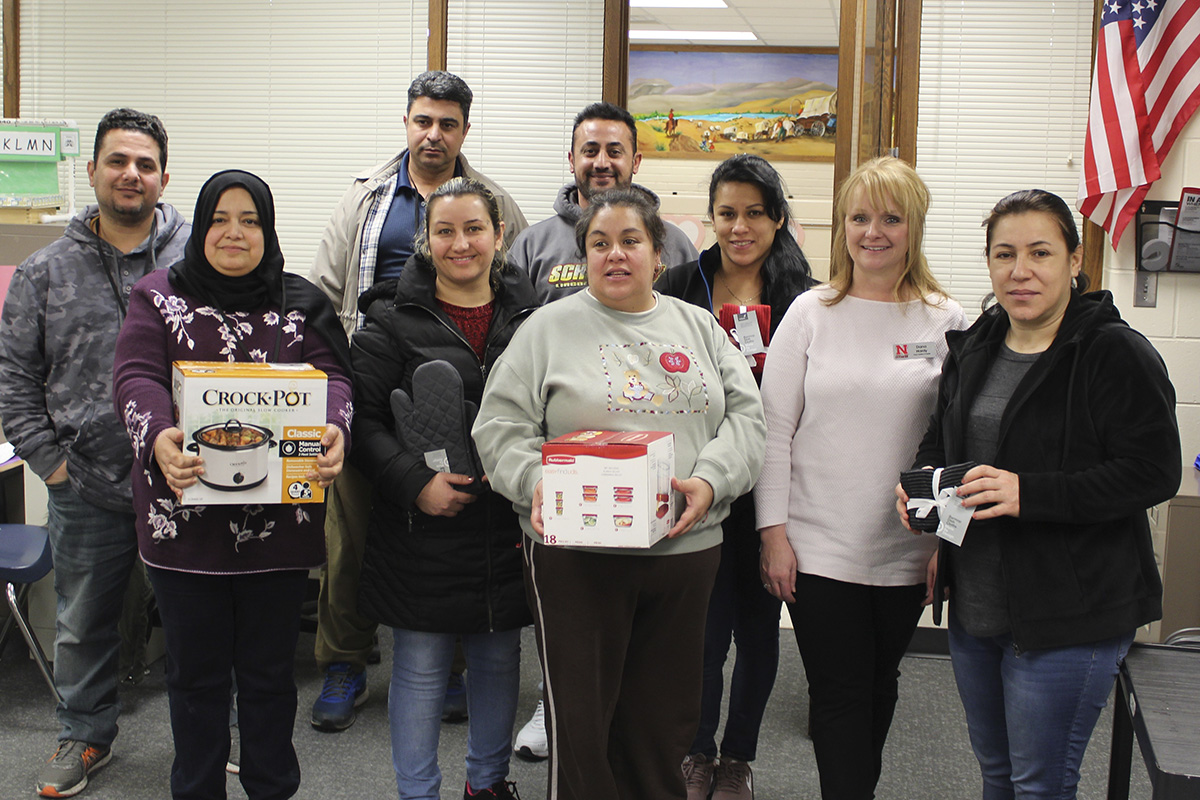
By Emily Gratopp, MS, Extension Educator, Lancaster County
LANCASTER COUNTY’S HEALTH STATUS
According to the County Health Rankings and Road Maps (1), Lancaster County is healthy overall. Lancaster County ranks 10th of 79 counties (of Nebraska’s 93 counties, 79 of them were assessed for health) in Health Outcomes, measuring how long people live and how healthy they feel while alive. However, Lancaster County is 24th of 79 counties in Health Factors, which measures health behaviors, clinical care, social and economic factors, and physical environment.
Thanks to Lincoln’s Community Health Endowment, there are maps of specific Lincoln neighborhoods based upon Census tracts with new 2019 maps (2). These maps show that though Lincoln is healthy overall, certain neighborhoods have health inequities. The maps indicate poverty in Lincoln is growing and localized to specific neighborhoods. They also show that physical activity and food access are correlated to poverty: areas with higher poverty have lower physical fitness among youth and lower access to healthy food.
The Nutrition Education Program (NEP) in Lancaster County, part of Nebraska Extension, works to address these issues and other social determinants of health (the conditions in which people live that impact health such as, neighborhood, employment, physical environment and education) through direct education and broader community health initiatives.
NEP TEACHES LIMITED-INCOME FAMILIES
Research has shown that income and education affect health (3). Those with limited income and low educational levels are at the highest risk for chronic diseases such as diabetes, heart disease and obesity. Similarly, underrepresented minority populations experience greater health adversities (4). For these reasons, NEP teaches adults and youth, focusing on minority populations, who are living at or near the U.S. poverty level (i.e., a family of four living on $26,200 annually) about how to increase their food security and health (5).
In Lancaster County, two of NEP’s most impactful classes include those for New Americans and those taught in family-style. NEP in Lancaster County partners with three culture centers and Lincoln Public Schools’ English Language Learner program to teach health and food security lessons to parents who are rather new to America.
Last year, NEP also embarked on family-based classes where parents and their children learn together. Several families gather (school-aged children and their parents) to cook, learn about MyPlate, plan meals and engage in physical activity. These classes are a win–win because they build family connections and allow families to embark on health practices together, increasing the chances that healthy changes will last.
Thanks to grants from Partnership for a Healthy Lincoln and Wellcare, NEP sends these families home with basic cooking supplies such as pots and pans, a blender or a skillet. One mother who attended a NEP class through a partnership with Circle of Security parenting classes at Region V Services, received a blender and exclaimed how excited she was that her and her daughter have been making fruit and vegetable smoothies for their after school snack. Some new Americans are just learning the convenience of microwaves and refrigerators and are happy to also learn to use a slow cooker or skillet. Gifting small kitchen appliances has made healthy, convenient cooking equitable for all audiences.
NEP INCREASES FOOD ACCESS
In addition to education, NEP coordinates efforts to increase food access in specific neighborhoods which lack grocery stores, markets or pantries that supply healthy food through three initiatives: Double Up Food Bucks, Choose Healthy Here and Growing Together Nebraska gardening.
NEP helps secure funds to supply food-insecure individuals utilizing SNAP with Double Up Food Bucks vouchers to double their purchase of fruits and vegetables at no additional cost to them.
Through Choose Healthy Here, local grocery store and convenience store owners increase their offerings of healthy foods. In 2019, NEP assisted two Middle Eastern-affiliated markets on 27th street to increase their offering of fresh produce and low-fat dairy products.
NEP also embarks in gardening adventures (along with Extension Master Gardeners) through Growing Together Nebraska to grow healthy, fresh foods which are donated to food pantries.
For more information about Choose Healthy Here and Double Up Food Bucks, see the March 2019 Nebline at https://lancaster.unl.edu/nebline/2019/mar19.
NEP is financed by two federal funding sources: the Expanded Food and Nutrition Education Program (EFNEP) and the Supplemental Nutrition Education Program-Education (SNAP-Ed).
If you are interested in volunteering with NEP, please contact Emily Gratopp at emily.gratopp@unl.edu or 402-441-7180.
Sources:
(1) County Health Rankings & Roadmaps: Nebraska. (2019). Retrieved from http://www.countyhealthrankings.org/app/nebraska/2019/overview.
(2) Community Health Endowment of Lincoln. (2020). Place Matters 3.0. Retrieved from http://www.chelincoln.org/placematters/information.html.
(3) Artiga, S. & Hinton, E. (2018). Beyond Health Care: The Role of Social Determinants in Promoting Health and Health Equity. Retrieved from http://www.kff.org/disparities-policy/issue-brief/beyond-health-care-the-role-of-social-determinants-in-promoting-health-and-health-equity.
(4) Sealy-Jefferson, S., Vickers, J., Elam, A., & Wilson, M. R. (2015). Racial and Ethnic Health Disparities and the Affordable Care Act: a Status Update. Journal of racial and ethnic health disparities, 2(4), 583–588. Retrieved from http://www.ncbi.nlm.nih.gov/pmc/articles/PMC4676760.
(5) U.S. Department of Health and Human Services. (2020). HHS Poverty Guidelines for 2020. Retrieved from https://aspe.hhs.gov/poverty-guidelines.